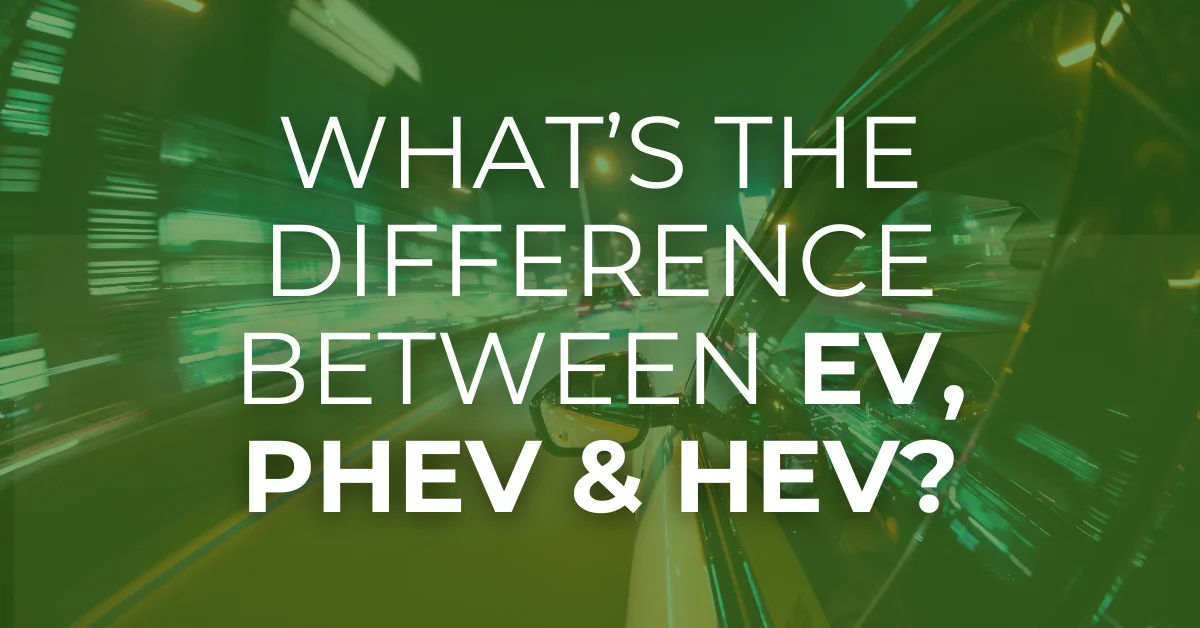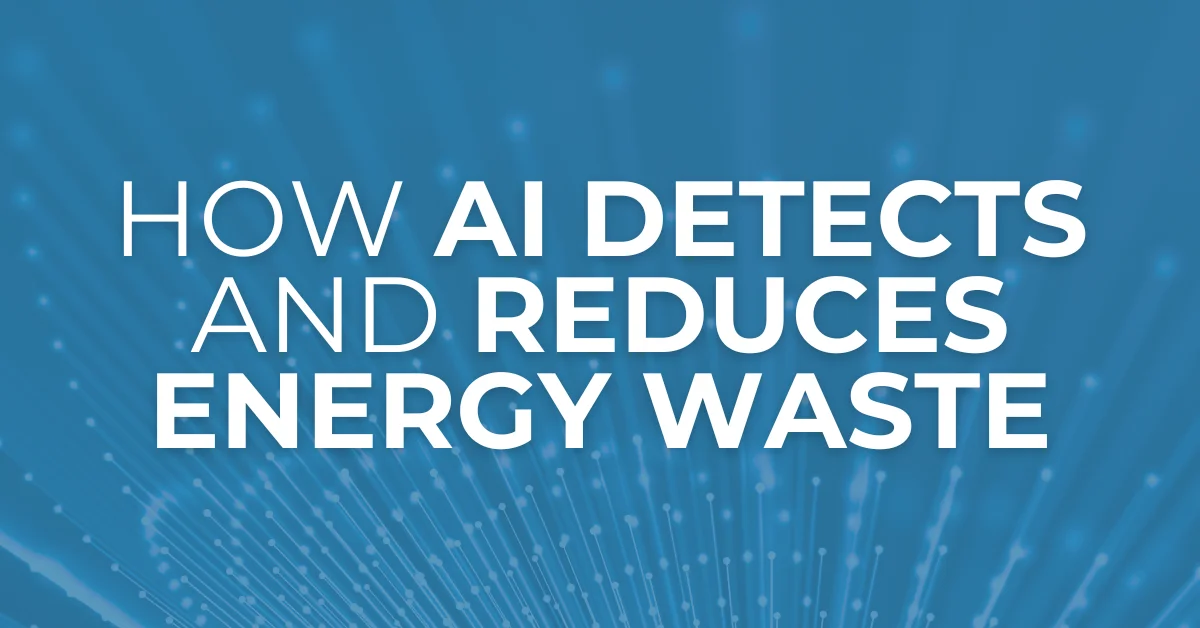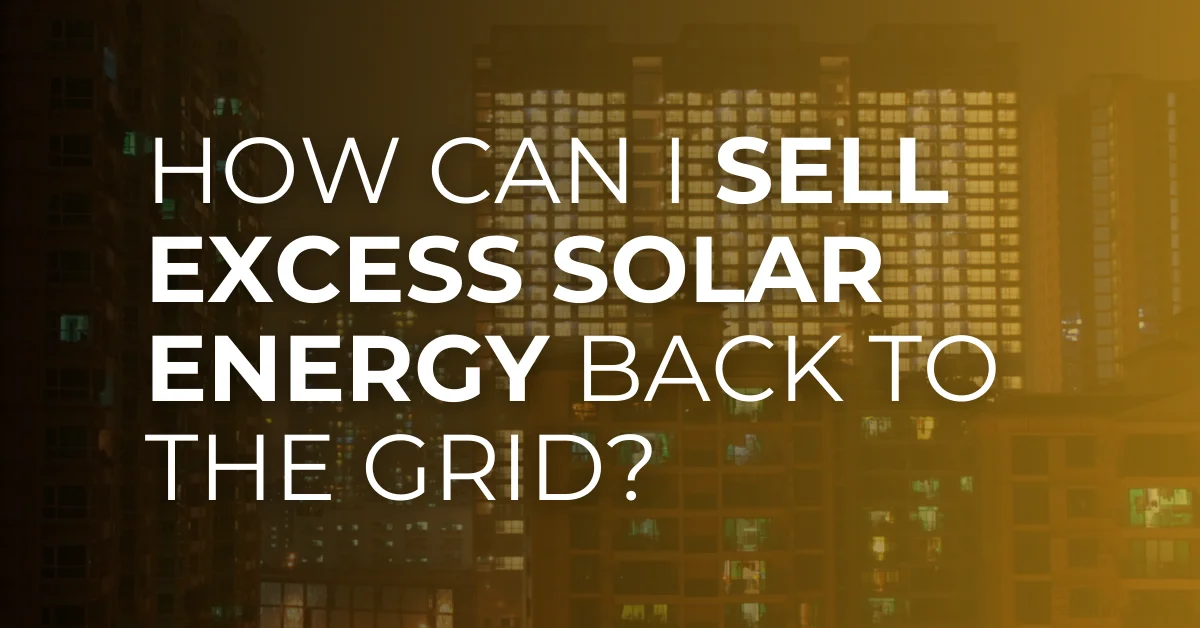The way we think about energy is changing. The traditional power grid, while foundational, is aging and increasingly unreliable in the face of rising energy demand, severe weather events, and a growing need for cleaner solutions. Whether you’re running a business, managing a campus, or developing a community, your reliance on centralized power exposes you to significant risks—outages, escalating costs, and limited control.
At Insight Distributed Energy, we focus on solutions that address these challenges head-on. Microgrids—localized, self-sufficient energy systems—are at the forefront of this transformation. They don’t just provide power; they deliver resilience, control, and savings in ways that the conventional grid cannot match.
This guide will take you through everything you need to know about microgrids:
- What they are and how they work.
- Why they are becoming indispensable for organizations of all sizes.
- The tangible benefits they offer, from energy independence to financial predictability.
If you’re exploring ways to protect your operations, cut costs, and future-proof your energy infrastructure, this is the place to start. Microgrids aren’t just the next step in energy management—they’re the smarter step.
Let’s begin.
What is a Microgrid?
A microgrid is a localized energy system designed to generate, store, and distribute electricity to a specific area, such as a business campus, industrial facility, residential community, or even a remote location. It functions as a self-contained power network, integrating different energy sources—such as solar panels, wind turbines, combined heat and power (CHP) systems, and backup generators—alongside energy storage solutions like batteries.
The key characteristic of a microgrid is its ability to provide power independently of the main utility grid while still maintaining the flexibility to connect to it when needed. This dual capability is what makes microgrids uniquely reliable and resilient.
How Microgrids Operate in Two Modes
Microgrids can seamlessly shift between two operational modes: grid-connected mode and island mode.
1. Grid-Connected Mode
In this mode, the microgrid works alongside the main utility grid. It can:
- Supplement Power Needs: If the local energy demand exceeds what the microgrid generates (e.g., during high usage hours), the system pulls electricity from the main grid to ensure uninterrupted power.
- Export Excess Energy: If the microgrid generates more power than needed (e.g., surplus solar energy during the day), it can export this excess back to the grid. In many markets, this creates an opportunity for organizations to earn revenue through net metering or similar programs.
Example: A commercial campus generates power using rooftop solar panels during the day. Excess energy charges on-site battery storage, and any surplus power is sent back to the main grid, reducing overall energy costs.
2. Island Mode
In island mode, the microgrid disconnects (or “islands”) from the main grid and operates autonomously. This occurs when:
- The grid experiences a failure or outage.
- The microgrid identifies instability in the grid, such as power fluctuations or brownouts.
- The facility chooses to operate independently, often for economic or operational reasons.
When islanded, the microgrid continues to supply energy by relying on on-site generation (e.g., solar, CHP) and stored energy (batteries) to power the defined area. The system’s controller manages this process in real time, ensuring energy is distributed efficiently to meet demand without interruption.
Example: During a severe storm, a hospital’s microgrid isolates from the failing grid and continues running on stored battery power and backup generators, ensuring critical medical equipment remains operational.
Why Microgrids Are Different from the Traditional Grid
To appreciate the value of microgrids, it’s important to contrast them with the traditional power grid—a centralized system built to serve vast regions through long-distance transmission.
| Feature | Traditional Grid | Microgrid |
| Power Source | Centralized power plants, long transmission. | Localized generation (solar, CHP, wind). |
| Vulnerability | Prone to widespread outages and failures. | Resilient; can island during disruptions. |
| Energy Transmission | Long distances, resulting in energy losses. | Short distances; more efficient delivery. |
| Control | Limited by centralized operations. | Smart, real-time energy optimization. |
1. Power Source
- Traditional Grid: Relies on massive, centralized power plants—often coal, gas, or nuclear—that transmit electricity over hundreds of miles.
- Microgrid: Generates power locally using distributed energy resources (DERs) like solar, wind, and CHP, reducing reliance on large-scale infrastructure.
2. Vulnerability
- Traditional Grid: A single failure (e.g., a downed power line, transformer fault, or plant shutdown) can trigger widespread outages across cities or regions.
- Microgrid: With localized generation and storage, microgrids isolate themselves during failures and continue operating, keeping critical systems online.
3. Energy Transmission
- Traditional Grid: Transmitting energy over long distances results in “line losses,” reducing efficiency and increasing costs.
- Microgrid: Power is delivered locally, minimizing transmission losses and improving energy efficiency.
4. Control
- Traditional Grid: Controlled centrally by utilities, offering limited flexibility or adaptability to changing energy demands.
- Microgrid: Managed in real time by intelligent software (microgrid controllers), which optimize energy flow, prioritize cost-effective sources, and respond dynamically to disruptions.
What Makes Microgrids Unique?
Microgrids are more than just a safety net during power outages—they are dynamic, intelligent energy systems capable of adapting to real-time conditions, optimizing energy use, and providing true independence. Here’s a closer look at what makes them stand out in today’s energy landscape:
1. Resilience:
Resilience is perhaps the most compelling advantage of microgrids. Unlike traditional grids, where a single fault can leave thousands without power, microgrids are designed to withstand disruptions and operate autonomously when necessary.
- Seamless Islanding: When the main grid experiences a failure—due to a storm, equipment breakdown, or overload—the microgrid’s controller automatically disconnects it (islanding) and switches to local generation and storage systems without any interruption.
- Maintaining Critical Operations: For hospitals, manufacturing facilities, data centers, and emergency response buildings, uninterrupted power can mean the difference between life and death—or the success and failure of operations.
- Localized Recovery: Even when broader grid restoration takes time, microgrids bring power back faster for the connected area by relying on on-site resources.
Example: After Hurricane Sandy in 2012, communities with microgrids were able to maintain power while surrounding areas remained in darkness for days.
2. Cost Optimization:
Microgrids give organizations control over energy production and consumption, driving significant cost savings. This happens through:
- Load Optimization: Microgrids monitor real-time energy demand and prioritize cheaper energy sources, like renewables or stored power, before relying on fuel-based generation or expensive grid power.
- Peak Shaving: By storing energy during periods of low demand (or low cost) and deploying it when grid rates spike, microgrids minimize reliance on costly peak demand pricing.
- Reduced Energy Loss: Traditional grids lose energy during long-distance transmission. Microgrids operate locally, minimizing these inefficiencies and reducing overall energy costs.
- Revenue Opportunities: When generation exceeds local demand, microgrids can export surplus power back to the main grid, generating income through programs like net metering.
Result: Businesses and facilities experience more predictable energy costs, better ROI on renewable investments, and long-term savings.
3. Sustainability:
Microgrids are designed to incorporate renewable energy resources like solar, wind, and even small-scale hydroelectric power, supporting global efforts to decarbonize the energy sector.
- Optimized Use of Solar and Wind: By integrating battery storage, microgrids capture excess solar energy generated during the day or wind power produced overnight. This stored energy is used when renewable generation dips, ensuring constant supply without relying on fossil fuels.
- Reduced Greenhouse Gas Emissions: Organizations can minimize their carbon footprint by replacing grid power (which may still be coal or gas-based) with clean, locally generated energy.
- Alignment with ESG Goals: For businesses focused on Environmental, Social, and Governance (ESG) metrics, microgrids provide measurable progress toward sustainability targets.
Practical Impact: A commercial campus with a solar microgrid can achieve 30–50% reduction in emissions while cutting energy costs, creating a win-win scenario for both financial and environmental performance.
4. Independence:
With a traditional grid connection, energy users have little control over reliability, costs, or the type of energy they consume. Microgrids flip this model, putting the power—literally and figuratively—back in the hands of the end user.
- Energy Autonomy: Microgrids allow businesses, communities, or industrial facilities to generate, store, and manage their own energy supply. This minimizes their exposure to fluctuating utility rates, outages, and grid instability.
- Custom Energy Solutions: Microgrids can be tailored to meet specific needs—whether it’s maximizing renewable usage, ensuring redundancy for critical systems, or integrating combined heat and power (CHP) for industrial efficiency.
- Operational Predictability: By reducing dependency on the main grid, microgrids offer more stable and predictable energy costs. This is particularly valuable for industries with heavy energy loads or organizations operating in regions with unreliable grid infrastructure.
Remote Applications: For off-grid or remote areas, microgrids provide reliable, standalone energy where extending traditional power lines would be cost-prohibitive or impractical.
Who Can Benefit from Microgrids?
Microgrids are not a one-size-fits-all solution—they are versatile systems that can be customized to meet the specific energy demands of various sectors. Whether the priority is resilience, sustainability, or cost savings, microgrids provide a measurable advantage to organizations and communities that rely on reliable, affordable power.
1. Businesses
From small commercial buildings to large industrial facilities, businesses rely on a steady and cost-effective energy supply to remain competitive. Microgrids help minimize downtime, reduce operating costs, and optimize energy use.
- Manufacturing Plants:
- Production facilities cannot afford unplanned outages, which can cost thousands—or even millions—of dollars per hour in lost output.
- Microgrids ensure continuous operation by seamlessly switching to island mode during grid failures.
- Integrating CHP systems also allows facilities to recover waste heat, lowering energy costs further.
- Data Centers:
- For data centers, even a momentary power loss can jeopardize critical systems and lead to data corruption or loss.
- Microgrids offer built-in redundancy and resilience, providing power independence while reducing energy costs with on-site renewables.
- Retail and Commercial Spaces:
- Businesses like shopping malls, grocery stores, and office buildings often face high energy costs during peak hours.
- Microgrids help manage peak demand, store energy when rates are low, and export excess power back to the grid to improve profitability.
- Sustainability-focused retailers can also showcase clean energy initiatives as part of their corporate responsibility efforts.
2. Communities
Reliable power is essential for communities, particularly in areas that are vulnerable to natural disasters, aging grid infrastructure, or grid instability. Microgrids ensure that critical facilities remain operational, improving both safety and quality of life.
- Hospitals and Healthcare Facilities:
- Healthcare systems must remain operational 24/7. Power outages can disrupt life-saving equipment, medications, and patient care.
- Microgrids with storage and backup generation provide guaranteed power and resilience during emergencies.
- Some hospitals also integrate CHP systems to efficiently generate both heat and electricity on-site.
- Schools and Residential Developments:
- Schools and residential communities benefit from reliable, affordable power while contributing to clean energy goals through renewable integration.
- During natural disasters, microgrids can power emergency shelters, offering a safe haven for local residents.
- Remote and Rural Communities:
- In regions where grid connections are unreliable—or non-existent—microgrids can provide consistent power without the need for costly infrastructure expansion.
- Solar microgrids with battery storage are often the most effective solution for isolated communities, providing affordable and sustainable energy.
3. Campuses
Campuses—whether educational, corporate, or mixed-use—often operate like small cities, with multiple buildings and diverse energy needs. Microgrids offer the scalability and control needed to optimize power delivery across these complex environments.
- Universities:
- University campuses are increasingly adopting microgrids to reduce energy costs, achieve carbon neutrality targets, and enhance resilience.
- On-site solar, wind, or CHP systems paired with energy storage allow campuses to generate clean energy and maintain operations during outages.
- Microgrids also serve as living laboratories for energy research and innovation.
- Corporate Campuses:
- Large companies benefit from microgrids by managing their energy needs independently, reducing reliance on volatile grid pricing.
- Microgrids integrate renewables to showcase sustainability leadership while ensuring reliability for mission-critical operations.
4. Industrial Facilities
Industrial operations have high energy demands and limited tolerance for disruptions. Downtime can lead to massive financial losses, product spoilage, or equipment damage. Microgrids address these challenges by combining resilience with cost savings.
- Critical Power Needs:
- Facilities like oil refineries, chemical plants, and heavy manufacturing require uninterrupted energy to maintain safety and operational standards.
- Microgrids deliver dependable, redundant power through a combination of local generation, storage, and backup systems.
- Cost Reductions:
- Industrial users can significantly cut energy costs by integrating solar and CHP systems while optimizing load management through microgrid controllers.
- Energy storage allows them to avoid peak grid rates by deploying stored power during high-demand hours.
- Energy Optimization:
- By recovering and reusing waste heat through CHP systems, industrial microgrids achieve efficiencies that central grids cannot replicate.
Who Stands to Gain the Most?
Any organization or community where energy reliability, cost control, and sustainability are priorities will benefit from microgrid implementation. From critical facilities like hospitals and data centers to large-scale manufacturing plants and rural communities, microgrids provide a tailored energy solution that:
- Keeps operations running during disruptions.
- Lowers energy expenses through smart generation and storage.
- Supports renewable energy adoption and environmental goals.
Microgrids are not just a backup plan—they are a strategic investment in energy independence, resilience, and long-term operational success.
Microgrid Installation: A Phased Approach
The installation of a microgrid is a collaborative process involving engineering, design, construction, and integration. At Insight Distributed Energy, we approach microgrid implementation in clearly defined phases to deliver systems tailored to the unique needs of businesses, campuses, and communities.
1. Site Assessment and Feasibility Study
Every microgrid begins with a detailed analysis of your site’s energy requirements, infrastructure, and goals. This phase includes:
- Load Profile Analysis: Assessing how much energy you use, when you use it, and identifying peak demand patterns.
- Energy Resources Evaluation: Determining available renewable resources (e.g., solar or wind potential) and the feasibility of integrating systems like combined heat and power (CHP) or energy storage.
- Economic Modeling: Analyzing costs, return on investment (ROI), and available incentives to ensure financial viability.
Outcome: A comprehensive feasibility report outlining the microgrid design, energy sources, cost breakdown, and projected benefits.
2. System Design and Engineering
Once the feasibility is established, the microgrid is custom-designed to fit the site’s requirements.
- Energy System Integration: Selecting the appropriate mix of energy sources (solar, CHP, batteries, generators).
- Microgrid Architecture: Designing the layout of energy generation, storage, and distribution systems.
- Control System Design: Integrating smart microgrid controllers to manage energy flow, optimize efficiency, and enable grid connectivity and islanding.
- Compliance and Permitting: Navigating local regulations, obtaining permits, and ensuring the design adheres to safety and grid standards.
Outcome: A blueprint for the microgrid that aligns energy performance with financial goals and operational requirements.
3. Installation and Commissioning
Microgrid installation involves both physical construction and software integration. This phase includes:
- Installing Energy Resources: Deploying solar panels, wind turbines, CHP units, backup generators, and energy storage systems.
- Building Infrastructure: Laying the electrical and control systems that connect generation, storage, and distribution components.
- Software Integration: Configuring the microgrid controller to monitor energy production, optimize consumption, and manage islanding seamlessly.
- Testing and Commissioning: Verifying that every system performs as intended under various operating conditions, including grid-connected and islanded modes.
Outcome: A fully operational microgrid ready to deliver energy reliability, cost savings, and sustainability.
Microgrid Maintenance: Ensuring Long-Term Performance
Like any energy infrastructure, microgrids require ongoing maintenance to ensure they operate reliably and efficiently over their lifespan. Modern microgrids are equipped with advanced monitoring tools that minimize manual intervention, but regular inspections and proactive care are still critical.
1. Routine Monitoring and Diagnostics
- Microgrid control systems continuously monitor energy generation, storage levels, and system health in real time.
- Remote diagnostics identify performance issues, inefficiencies, or potential failures before they escalate.
Example: The system can detect a drop in solar output, automatically flagging the need for a panel inspection.
2. Preventive Maintenance
Preventive maintenance ensures components are functioning optimally and prevents costly breakdowns. Key tasks include:
- Solar PV Systems: Cleaning panels, checking for debris, and inspecting electrical connections.
- Batteries: Monitoring state of charge, capacity, and temperature to ensure longevity.
- CHP and Generators: Routine engine checks, fuel system inspections, and lubrication to maintain efficiency and reliability.
- Controllers and Inverters: Software updates, diagnostics, and recalibrations to ensure energy flow is optimized.
Regular maintenance schedules are tailored to the site’s usage and component lifespan, ensuring minimal disruption to operations.
3. Corrective Maintenance
When issues arise, quick and effective corrective maintenance is essential to prevent downtime. Microgrid monitoring systems often provide alerts that allow technicians to address problems before they impact performance. Common corrective tasks include:
- Replacing faulty inverters or batteries.
- Repairing damaged wiring or generation equipment.
- Adjusting software configurations in response to changes in energy demand.
4. Performance Optimization
Over time, energy usage patterns and requirements may shift. To ensure the microgrid continues to operate efficiently, periodic performance evaluations are conducted to:
- Analyze historical data to identify energy savings opportunities.
- Adjust system controls to accommodate new energy loads or additional renewable sources.
- Integrate new technologies, such as improved battery systems or advanced controllers, as they become available.
Conclusion: Build a Smarter, Resilient Energy Future
Microgrids offer a clear path forward: they provide localized, reliable, and efficient energy tailored to your specific needs. Whether it’s keeping critical operations online during outages, optimizing energy costs through smarter controls, or integrating renewable sources to reduce your carbon footprint, microgrids are designed to deliver results.
At Insight Distributed Energy, we take a hands-on approach to designing and implementing custom microgrid solutions that address your most pressing energy challenges. From initial feasibility studies to installation, monitoring, and maintenance, our team ensures your system works seamlessly to deliver resilience, efficiency, and long-term savings.
If you’re considering how microgrids can support your operations, improve energy independence, or align with your sustainability goals, we’re here to help. Our experts will guide you through the process, answer your questions, and explore what a tailored microgrid system could mean for your business or community.
Take the first step toward a more resilient and future-ready energy strategy by visiting our Get Started page. Together, we’ll build a solution that puts you in control of your energy—today and for years to come.
Let’s redefine what reliable, sustainable energy looks like for your organization.




